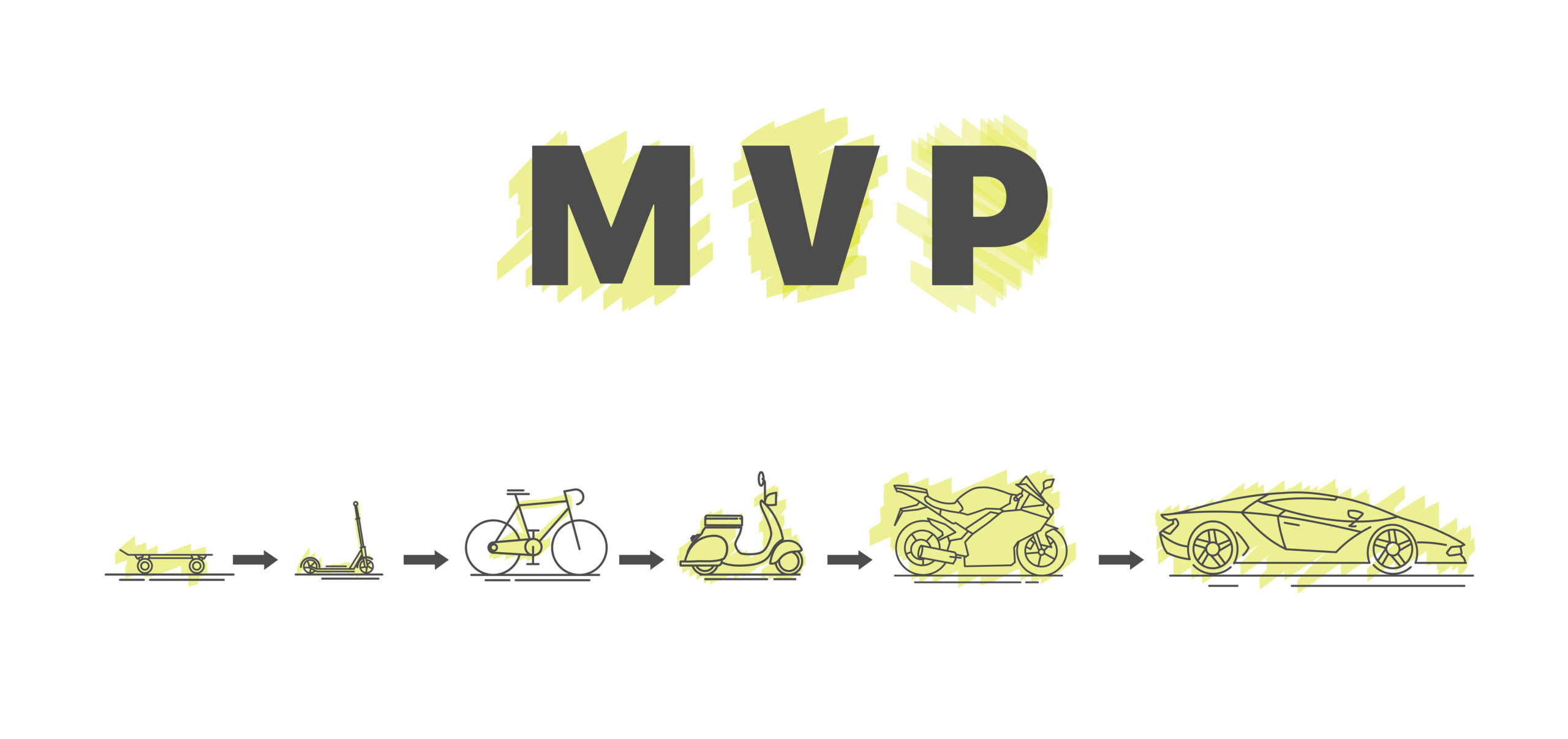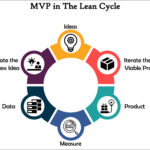What is a Minimum Viable Product? What are the benefits of using it?
It is a feature version of the product to be used by customers. They provide feedback for future product development. The main purpose is to create an initial version of your product concept.
- Suppose you are ready with an app idea. All the features, design, platform, and services are planned in your head. But you have got one big question in your mind. “. Are these what people really want?”. MVP is there for your rescue.
- Today, startups must know the concept of Minimum Viable Products or MVPs. It allows them to test the product before building the final design.
- A successful MVP approach includes steady and incremental improvements. Also, it is based on customer feedback leading to a final product.
- A successful MVP approach includes steady and incremental improvements. Also, it is based on customer feedback leading to a final product.
- MVP is not bug-free and complete. It is the opposite. An MVP is not a product. On the contrary, it's a tool used to run experiments and test hypotheses.
Advantages of the MVP Approach
- MVP allows startups to minimize developing costs and maximize funds.
- It allows entrepreneurs to learn from their mistakes if any.
- It is quite a cheaper option in terms of design and manufacturing costs. You save the cost of developing those extra unnecessary features.
- Startups can get a clear idea of what features might need to be added in the future.
- Less support staff, fewer moving parts, and coding requirements.
Disadvantages of MVP Approach
- MVPs need efforts to get reliable customer feedback.
- It might demand higher revisions based on feedback.
Top 7 Benefits of Minimum Viable Product
Following is the list of the top key purpose of MVP:- Early Consumer Research and Testing Prospect - Customer data ensures that the created features are enough to meet your user's needs. Eliminate the feature or stop the project for damage reduction.
- User Intelligence and Early Feedback - The quicker your product goes to the customers, the faster you'll be able to get their opinions. MVP development process clears the needs of your customers.
- Early Customer Acquisition - Deploying an early version of the product to market helps to get an initial customer base. This leads to spreading the good word about your product. These customers act as your brand ambassador. As a result, your business builds a network of engaging users.
- Verifying Market Trends - You can find out which market trends by MVP distribution. It will help you to present your product in the market.
- Market Validation - An MVP validates whether your product will be a good fit for the targeted audience. Your customers will be able to understand the unique abilities of your product.
- Attracting Investors - To get external investments on board, MVP is the best solution. Investors prefer that it is implemented successfully rather than being perfect on paper.
- Time and Cost Optimization - MVP development foresees the risks and thus helps you to save your resources and money.
How to Plan a Minimum Viable Product?
 Many startups fail due to a lack of market needs for their products.
It is important to understand the needs of customers while developing a
product.
Here we have listed a few steps to plan a Minimum Viable Product:
Many startups fail due to a lack of market needs for their products.
It is important to understand the needs of customers while developing a
product.
Here we have listed a few steps to plan a Minimum Viable Product:
Step 1: Validate your idea
An MVP helps you confirm if your product survives in the market. Because an idea might be required in the real world. Your idea validation needs the listed processes- Customer validation: Finding the right customer base with the most potential is important. Identify early adopters and learn their problems, needs, behaviors, and opinions.
- Market research: It includes feedback and market insights. Besides it, helps you with competitor analysis, communication channel mix, and keyword research.
- Concept testing: You can evaluate customer acceptance of your new product before introducing it to the market.
Step 2: Create a user flow
- Following are the steps for a user flow
- User identification: It helps you make informed decisions to understand user flow.
- User analysis: Analyze user needs.
- User flow outline: There are three components: an entry point, steps to progress, and the final CTA.
- Define the user flow elements: Organize all the actions of the user flow.
- Improve your outline: Reevaluate the outline if required.
Step 3: Map your story with user inputs
Use short and simple stories to showcase customer perspectives. Story mapping is the technique to create a holistic view. Also, it avoids feature backlog during product planning. Product Journey Maps identifies the list of capabilities of customer's needs. They can focus on them in multiple releases.Step 4: Prioritizing features
After creating a process flow and user story, it is important to focus on the features.
Prioritizing between functional and urgent features can be tricky. But it overcomes money limit, time limit, resource limit, or expertise/knowledge limit.
Step 5: Build, test, and implement
Once the features of your product are defined, you can start MVP development. Building, measuring, and learning from feedback improves the product.How to check whether your Minimum Viable Product is successful?
Following are the methods to measure the MVP's success:- Word of Mouth: The traffic on your product reveals its success.
- Engagement: A good engagement rate measures the current and future value of the product.
- Percentage of Active Users: The number of downloads and launch rates helps to study the behavior of your users.
- Client Acquisition Cost (CAC): Verify whether the costs of acquiring paying customers are equivalent to marketing efforts.
- Client Lifetime Value (CLV): Total time a user spends on your software product before uninstalling or discontinuing it.
Top 4 Reasons Why MVP's Fail
There are some hidden pitfalls of MVP development:- Unclear goals: If your priorities are misplaced it will lead to MVP failure.
- Features Overload: MVP with extra features can result in poor UX and may annoy your customers.
- Untimely Launch: MVP loses its value in the market, in a case launched at the wrong time.
- Lack of Consumer Feedback: MVPs might fail if the company does not consider the consumer pain points
Wrapping Up
The right Minimum Viable Product (MVP) journey is important and significant for a successful product. Understand the steps and strategies. Remember to understand your target audience. Work on the project without investing too much time and resources.
All of this can be possible with the right idea, listing minimum viable features, the right data on the target audience, and the right MVP Development company by your side.
To get started with your MVP, contact SouthIndus Labs for more info





